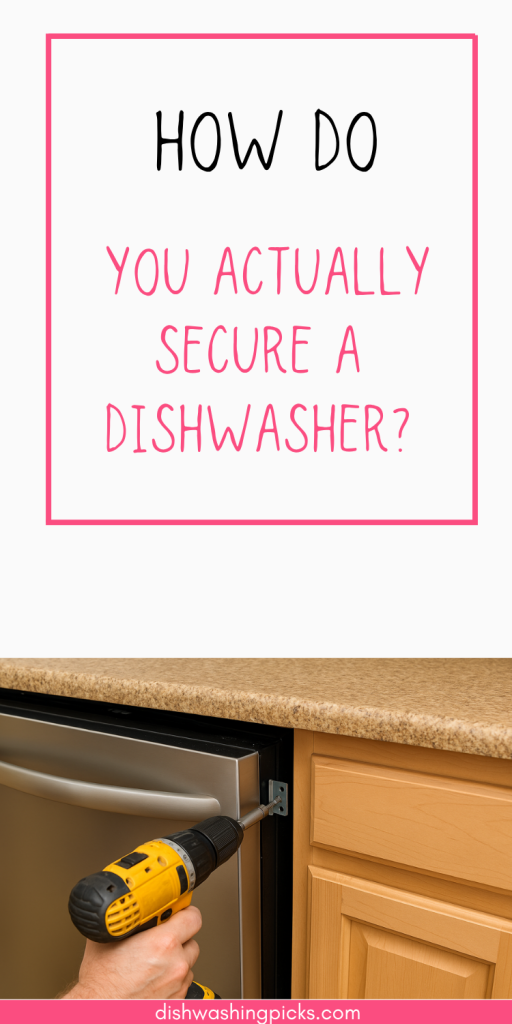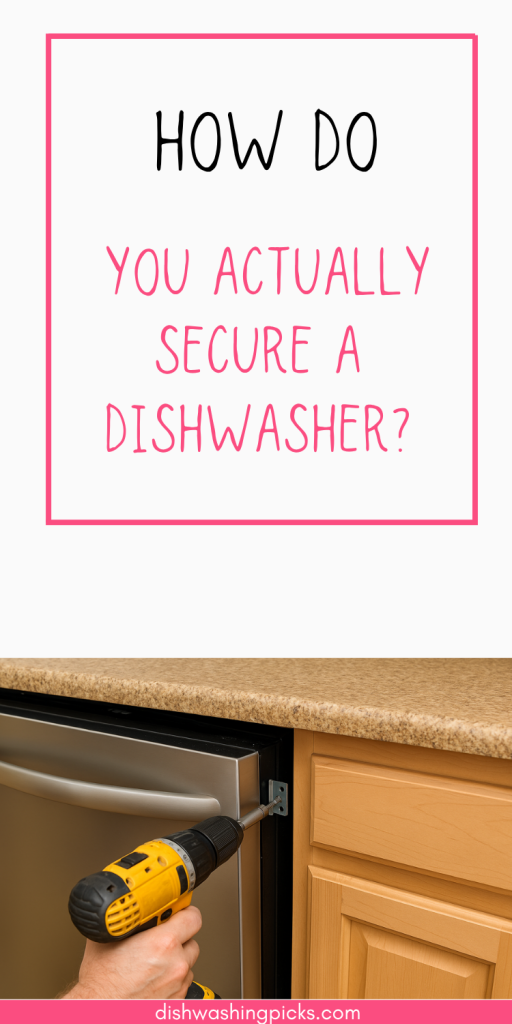
Let’s be real—installing or securing a dishwasher isn’t exactly on anyone’s bucket list of “fun weekend activities.” But hey, if your dishwasher is wobbling like it just stepped off a merry-go-round or making noises like it’s trying to take off, it’s time to do something about it.
You might be thinking, “Wait, aren’t dishwashers just supposed to… stay put?”
Yep, they are. But sometimes, life (or bad installation) happens.
Step One: Know Why It’s Wobbly in the First Place
Before you even grab a screwdriver, take a sec to figure out what’s going on.
- Is it tilting forward when you open the door?
- Are there weird gaps between the dishwasher and the cabinets?
- Is it doing a little dance every time it runs?
These are all clues. And no, your dishwasher didn’t suddenly develop a personality—it probably just isn’t secured to the cabinet or the floor properly. Happens more often than you’d think.
Step Two: Let’s Peek Under the Hood (Well, the Counter)
Alright, grab a flashlight and open the dishwasher door. Look up.
See those little metal tabs sticking out at the top or sides? Those are mounting brackets—they’re your new best friends.
👉 If your dishwasher’s loose, chances are these brackets aren’t screwed in properly—or at all.
Now, depending on how your kitchen is set up, your dishwasher might be mounted:
- To the underside of the countertop (standard if it’s wood or laminate)
- Or to the side cabinets (usually the go-to if you’ve got granite or stone counters)
Heads up: Stone counters don’t love screws. If that’s your situation, you’ll want side-mounting kits. They’re cheap, easy to find at any hardware store, and honestly a game-changer.
Step Three: Adjust Those Legs (Yes, Dishwashers Have Legs)
Didn’t know your dishwasher had legs? You’re not alone.
Most have adjustable feet that let you raise or lower the height. This isn’t just about making it look flush—it helps balance the whole unit.
Here’s how to do it:
- Use a wrench or adjustable pliers to twist the legs until the dishwasher sits evenly.
- Don’t forget the back legs—those might need adjusting too, which usually means pulling the dishwasher out a bit. (Annoying? Yes. Worth it? Also yes.)
Try opening and closing the door a few times. If it feels sturdy and doesn’t tip forward, you’re on the right track.
Step Four: Screw It (Literally)
Now, go back to those brackets. Use short wood screws to attach them securely to the cabinet or counter.
A few quick tips:
- Don’t overtighten—you’re not fixing a car engine.
- If you’re going into stone or tile, use side brackets and maybe a little construction adhesive if you’re feeling fancy.
- Make sure you’re not drilling near any wires or hoses. That would turn into a whole other kind of article…
Bonus: Quiet It Down (Optional but Kinda Nice)
If your dishwasher is still a bit noisy or seems to vibrate more than it should, you might want to add a little insulation. Some dishwashers come with side or top insulation blankets—tucking those in can help cut down on rattling and sound.
Imagine this: you’re watching Netflix in peace, and your dishwasher is humming like a whisper, not roaring like a jet engine.
Worth the extra 5 minutes, right?
Final Check: Give It the Shake Test
After everything’s in place:
- Give it a gentle nudge.
- Open and close the door.
- Start a short cycle and see how it behaves.
If it stays put, congrats—you’ve officially secured your dishwasher like a pro.
Wrapping It Up: Not Rocket Science, Just a Little Know-How
So, now that you’ve made it this far… look at you! Dishwasher DIYer extraordinaire.
Just remember: securing a dishwasher isn’t hard, but skipping it can lead to a bunch of problems—like leaks, misalignment, or even busted floors. A few screws and adjustments now can save you from expensive headaches later.
Need a recap?
- Check for wobbling.
- Adjust the legs.
- Secure with brackets.
- Run a test.
Still not sure or hit a weird snag? No shame in calling a pro. But if you followed this guide, chances are you’re good to go.
Want more no-nonsense tips for making your appliances actually behave? Stick around. We’ve got plenty more where this came from.

